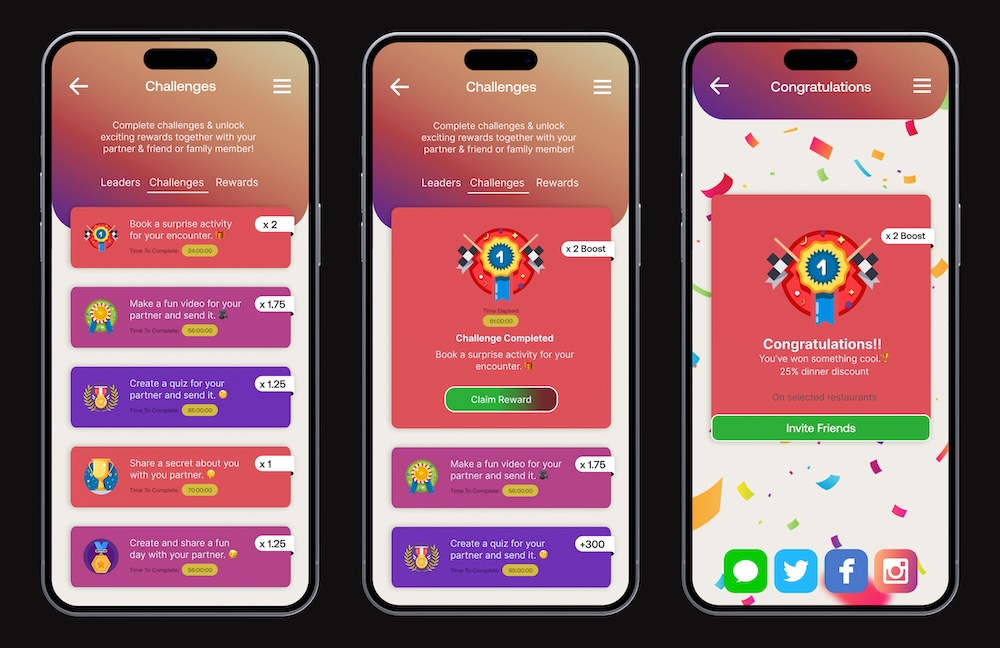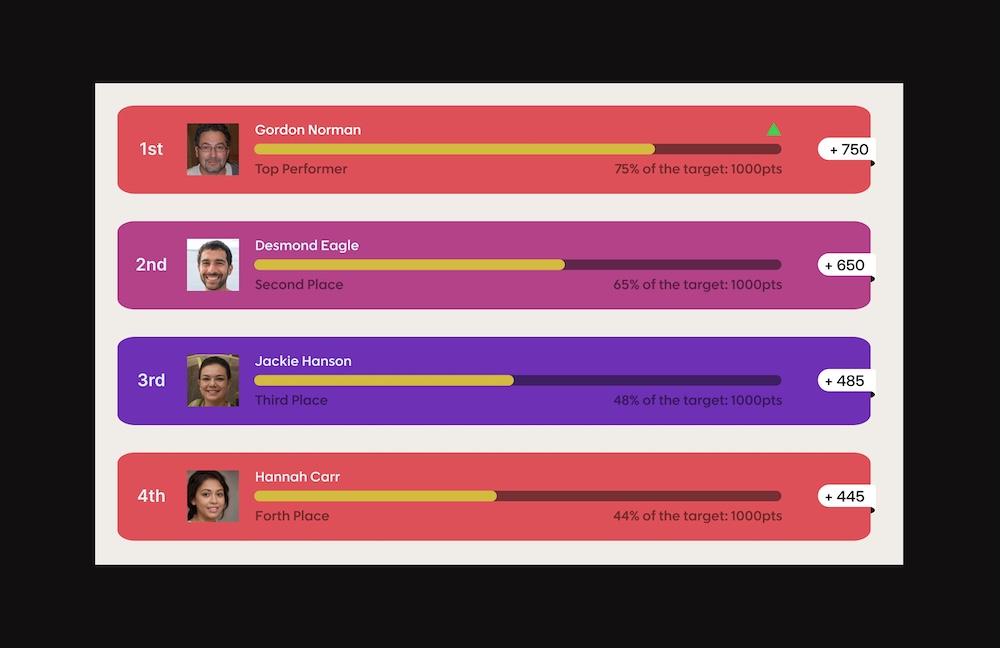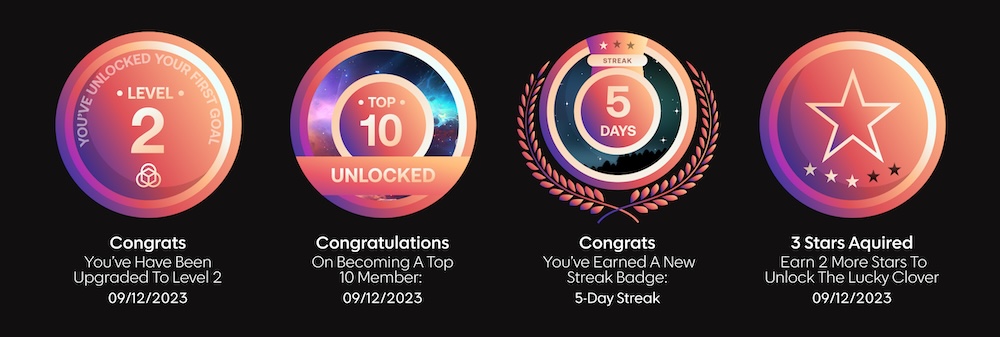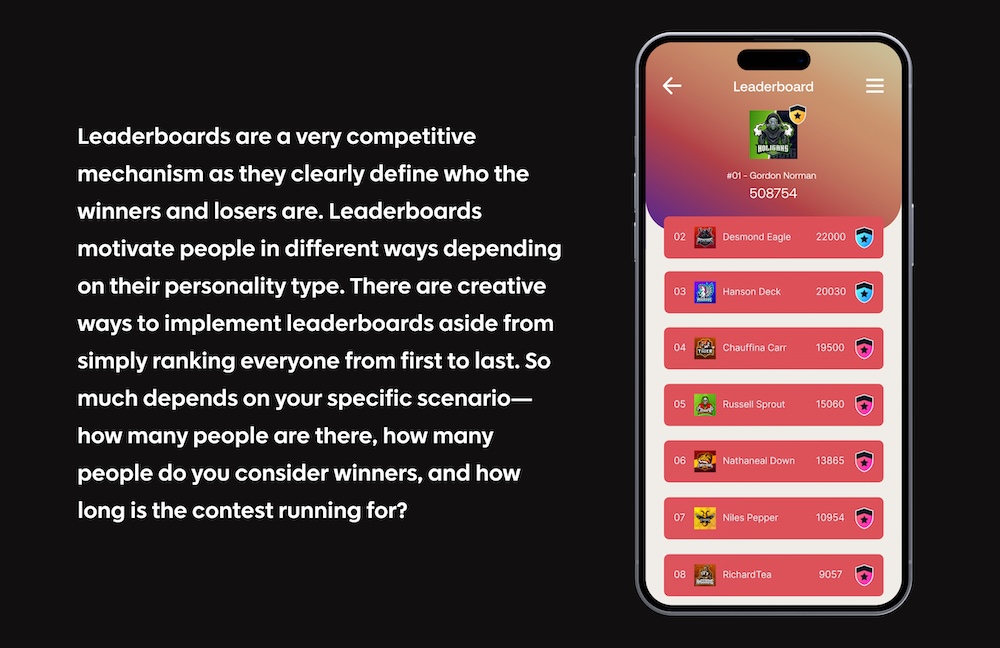Points, Badges, And Leaderboards
Tips to Successfully Implement Gamification Elements
What is gamification, and how can it add value to your loyalty program? Let us count the ways.

Gamification is the practice of using elements of game systems to encourage certain behaviors in non-game systems. Trust us—it’s a lot more fun than it sounds!
Three of the most commonly employed elements of gamification are points, badges, and leaderboards. Their popularity lies in their simplicity: they’re easy to implement, users instantly recognize them, and everyone intuitively knows how to interact with them.
Let’s be clear—gamification elements aren’t a shortcut to overnight success. They require some thought in order to implement successfully. We’ll explore some of the ways that you can use gamification to up the fun factor and draw users in.
Point Systems Inspire Action
Point systems are a flexible game element that influences behavior by giving users a goal they can work towards, and the ability to track their progress in an aesthetically pleasing way. Points can be used as currency, like airline frequent flyer miles, or to gain status and prestige. Earning points is rewarding, and UI/UX plays as much a part in this reward system as game mechanics do. Providing users with an aesthetically pleasing tracking system as points accrue provides a sense of satisfaction.
These visual cues encourage users, letting them know they are on the right track and reinforcing the feeling that they want to take this action again and again. There are several ways to implement point systems in order to achieve and enhance this feeling.

Currency:
Users love goals and choices. Choices allow users to get the most out of the system and gives them a goal to work towards.
Status:
When users can share and compare points it creates more motivation to act in order to gain more points. This tactic could alienate users who aren’t as naturally competitive, but grouping individuals into teams and displaying their collective score is one way around it. Points can also be reset at regular intervals, giving users another chance to succeed, perhaps thinking “I didn’t do well in the summer league, but I’ll try harder in the fall league.”
Prestige:
Another angle is to tie some sort of leveling mechanism to the points earned. Airlines and hotel reward programs employ this strategy as well as games like Dungeons and Dragons. Earning points grants access into a higher level of the club or a higher rate of discount, or some other kind of perk—perhaps your avatar in the app turns gold once a certain threshold is met. In some systems, once a user earns a prestige level it can never be taken away. In others, it has to be maintained or resets every so often.
Goals:
Everything we’ve covered so far is in some way goal related. You can implement a more straightforward points system where the user has to earn a certain number of points in order to achieve the goal. One helpful tool to help users visualize this process is a progress bar that represents how many points the user still needs to earn, with a percentage counter shown to the side. This visual trick is highly motivating—typically people can’t stand to leave something unfinished. This is a straightforward way to implement points and provides a low bar to entry while appealing to as many people as possible. Even though Tronic doesn’t use points in the traditional sense, this is very similar to the Journeys product—it’s easy to understand, appeals to everyone, and users are guaranteed the result they want in a clear and straightforward manner.
Badges Bring Legitimacy and Loyalty
Badge systems are another great way to influence behavior. A badge is generally earned for completing a task or a series of tasks. You’ll commonly find them in social media apps, mobile games, video games, and more. Badges help motivate the user by introducing them to prospects and goals they may not have thought of on their own before. By enticing them to complete the task in order to earn a badge, they’re inspired to act and are then rewarded for engagement.
A well-done badge can become part of an entire system or collection that cultivates motivation and inspires action. Think of the coins that members of Alcoholics Anonymous earn for achieving sobriety. Creating a system lets users set a goal they can achieve. If they’re earning badges in a vacuum, for example, where they only see their collection of 12, they’re less likely to work towards earning the next one. However, if they see that they have earned 12 out of a collection of 25, they now have a goal to meet.
Here are a few ways to incorporate badges.

Badges for the sake of it:
Some badges serve the same purpose as the progress bar we talked about earlier. The user can see they have collected 24 badges and that there are 75 total to collect. Getting their badge screen to 100% becomes the goal. This is probably the most basic implementation of badges.
Badges as Keys:
This concept requires the user to hold the correct badge or combination of badges to unlock a feature or reward in the system. This gives users a more defined goal as they collect badges.
Badges as Status:
Badge collections could be public or shareable on social media. They can also represent status within a group—like the Alcoholics Anonymous coins mentioned earlier.
Badges as Currency:
This is a new and exciting area of gamification where badges can be traded for rewards or bought and sold in a marketplace. This motivates users with a choice, and as previously discussed, users love choices. Tronic is responsible for this advancement in the gamification space. Tronic uses badges as if they were points, keys, status, rewards, and currency in very fascinating ways. It appeals to the whole spectrum of people that can be influenced by gamification.
Leaderboards Let your Customers Win!

Here are a few things to consider when implementing leaderboards:
Call to Action:
The first step in creating a leaderboard is determining what it is that you are trying to motivate people to do. Context is key here. If you want to increase the frequency with which customers use your mobile app, and your mobile app is not a game, people might find themselves turned off by finding their name high up on the leaderboard. “Oh no, I guess I’m on here too much,” they might think. Leaderboards can also turn people off if they find they are too far down on the list. Getting to the top might seem insurmountable, and if a leaderboard is your only element of gamification, they might abandon the app altogether.
Timeframe:
If your leaderboard simply tallies the lifetime point totals of all users, then the task of moving up a leaderboard seems very daunting to a new user who you’re only beginning to foster a relationship with. A leaderboard that resets at set intervals gives everyone a chance to be on equal footing every day/week/month/year. You can include a view that shows users their all-time point totals, but we recommend putting a focus on the points earned at each interval in order to increase engagement with all users.
Teams:
Breaking users into teams creates motivation by providing a sense of community and a duty to fellow teammates to keep their score up.
Individual Tasks:
In some systems, it may be advantageous to use several leaderboards in order to track many small tasks or challenges. Who finished a task first, who earned the most points for each task, and who shared the most on social media today? This gives more users a shot at seeing their name at the top of the leaderboard.
Points, badges, and leaderboards are all great mechanisms for employing gamification to increase engagement and inspire users to act. These three common elements give users meaningful choices, enticing rewards, and a sense of accomplishment as they earn points, badges, and make their mark on the leaderboard. Tronic Journeys provides layered gamification options that ignite user’s imagination and help bring your loyalty program to life.
Ready to see it in action? Let’s schedule a demo for you today! https://tronic.app/contact
Sources:
“For the Win" by Kevin Werbach and Dan Hunter: Amazon
“GAMIFY" by Brian Burke: Amazon


